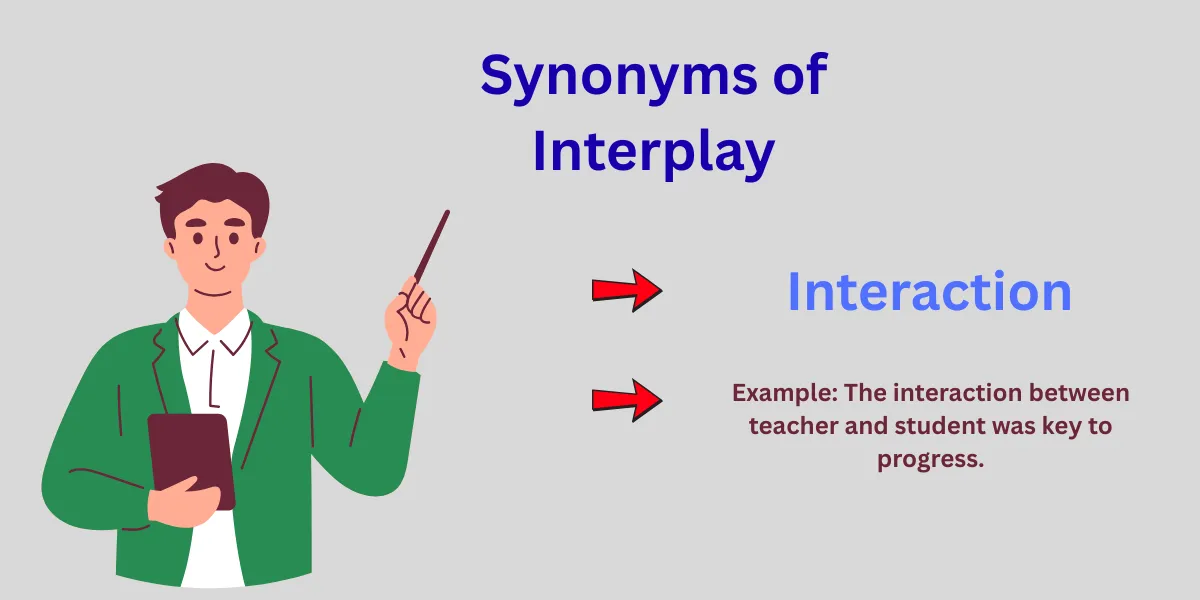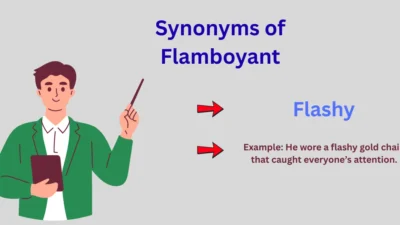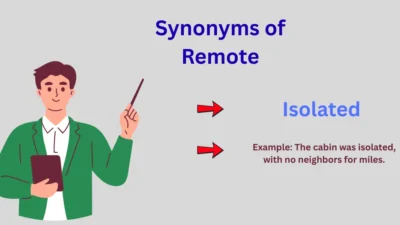Have you ever noticed how people, ideas, or forces seem to affect each other in subtle ways? That back-and-forth connection is what we call interplay. Many learners look for synonyms of interplay because the word itself, while useful, can sometimes feel too formal or repetitive. At its heart, interplay means interaction, exchange, or the way two or more things influence one another.
Words like interaction, exchange, connection, collaboration, or dynamic can step in as synonyms, each adding its own shade of meaning. Some sound professional and precise, while others feel more casual or creative. Knowing these options helps you choose the right word for essays, conversations, or storytelling.
This guide will explore the most common synonyms of interplay, explain their meanings, and show you how to use them naturally in sentences. By the end, you’ll have a clearer sense of how to express connections and relationships with variety and depth.
What Does Interplay Mean?
At its core, interplay refers to the back-and-forth influence or interaction between two or more things—people, ideas, forces, or elements. It’s often used to describe subtle, dynamic relationships:
- The interplay between light and shadow
- The interplay of personality dynamics in a team
- The interplay between emotions and logic
It’s not about dominance or control—it’s more like a dance: sometimes delicate, sometimes complex, but always involving mutual influence.
Key nuances of interplay:
- Mutual: It’s not one-sided.
- Dynamic: Involves change or movement.
- Balanced: Often subtle, not extreme or forceful.
Synonyms for Interplay – With Examples & When to Use Them
1. Interaction
Use when: You need a general term for two or more things affecting each other.
Example: The interaction between the teacher and student was key to progress.
2. Exchange
Use when: There’s a more equal or back-and-forth sense.
Example: Their exchange of ideas sparked a breakthrough.
3. Relationship
Use when: Emphasizing a sustained connection over time.
Example: The relationship between diet and mood is complex.
4. Correlation
Use when: Showing a statistical or logical connection.
Example: There’s a strong correlation between stress and sleep issues.
5. Interconnection
Use when: Highlighting systemic or web-like links.
Example: The interconnection between global economies is undeniable.
6. Synergy
Use when: The combined effect is greater than the sum of parts.
Example: Their synergy created a product that wowed the market.
7. Linkage
Use when: Describing a more formal or structural connection.
Example: The linkage between education and income is well-documented.
8. Reciprocity
Use when: Mutual give-and-take is central.
Example: Friendship thrives on reciprocity.
9. Interrelation
Use when: More formal or academic discussions.
Example: The interrelation of art and culture shapes identity.
10. Crossover
Use when: One field or thing influences another unexpectedly.
Example: The crossover between jazz and hip-hop created something fresh.
11. Collaboration
Use when: Human-driven, often creative or work-related.
Example: Their collaboration merged science with storytelling.
12. Engagement
Use when: There’s active involvement or participation.
Example: Social media changed our engagement with news.
13. Dialogue
Use when: Focus is on verbal or intellectual back-and-forth.
Example: The dialogue between artists pushed new boundaries.
14. Choreography
Use when: Describing a more elegant, coordinated interaction.
Example: The choreography of traffic systems keeps cities moving.
15. Entanglement
Use when: Things are deeply or messily intertwined.
Example: The legal entanglement took years to resolve.
16. Harmony
Use when: Emphasizing peaceful, balanced interaction.
Example: The harmony between colors made the painting pop.
17. Confluence
Use when: Two streams or forces merge.
Example: The confluence of cultures gave rise to new traditions.
18. Blend
Use when: Something new emerges from the mix.
Example: The blend of spices created a bold flavor.
19. Interfusion
Use when: Poetic or academic tone for merging.
Example: The interfusion of past and present in the novel was seamless.
20. Oscillation
Use when: Movement back and forth is literal or metaphorical.
Example: The emotional oscillation in relationships can be exhausting.
21. Interdependency
Use when: Mutual reliance is key.
Example: Ecosystems are based on interdependency.
22. Cross-pollination
Use when: Sharing or mixing of ideas between groups.
Example: Cross-pollination between departments led to innovation.
23. Tension
Use when: Emphasizing friction or strain.
Example: The tension between tradition and change was palpable.
24. Fusion
Use when: The parts combine into one new thing.
Example: Their fusion of styles made waves in fashion.
25. Negotiation
Use when: There’s a give-and-take to reach an agreement.
Example: The negotiation between values and goals can be tough.
26. Balance
Use when: Things must coexist without overpowering.
Example: The balance between work and life is crucial.
27. Commingling
Use when: Used in finance or social spaces.
Example: The commingling of funds raised concerns.
28. Contrast
Use when: Differences define the interaction.
Example: The contrast between urban and rural life fascinated her.
29. Tango
Use when: You want a playful or metaphorical tone.
Example: Their political tango has lasted for years.
30. Dynamic
Use when: Emphasizing changing energy or power shifts.
Example: The team’s dynamic changed after the new manager joined.
Choosing the Right Synonym: Emotional Tone & Context Matters
When selecting a synonym for interplay, ask yourself:
- What’s the emotional tone?
- Tension or contrast for friction.
- Harmony or fusion for peaceful interactions.
- Is the relationship active or passive?
- Dialogue or negotiation for active exchanges.
- Correlation or linkage for more observational tones.
- Is it human or abstract?
- Collaboration and engagement for people.
- Blend, interconnection, or synergy for concepts or systems.
- Formal vs. informal tone
- Interrelation and interfusion feel academic.
- Tango and crossover are more playful.
- Cultural or poetic context?
- Use confluence, interfusion, or choreography for more artistic or elegant writing.
Conclusion:
The word interplay means how things work together. It shows the give and take between people, ideas, or forces. When you use synonyms like interaction, exchange, teamwork, balance, or connection, you can say the same idea freshly. Each word has its own shade. Interaction feels active. Balance feels steady. Teamwork feels united.
Using these words will make your writing easy to read and strong. You can choose the one that fits best for your topic. A story about nature may need harmony. A business piece may need coordination. A talk about people may need to exchange.
Learning many synonyms gives you power. It helps you share your thoughts with more life and color. It also keeps your writing clear and not dull. Words are tools. The better you know them, the better you can build ideas..



